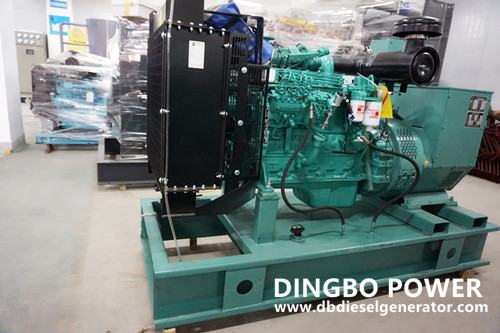dingbo@dieselgeneratortech.com
+86 134 8102 4441

- Home
- Products
- About Us
- Service
- News
- Technical Support
- Contact Us
dingbo@dieselgeneratortech.com
+86 134 8102 4441
Mar. 25, 2022
When the generator has reverse power (the external power points to the generator, i.e. the generator becomes the motor), the reverse power protects the action circuit breaker from tripping. Three phase voltage and two phase current signals need to be collected.
Because of the different forms of primary energy, different generators can be made. Hydrogenerators can be made from water and turbines. Due to different reservoir capacity and drop, hydro-generators with different capacity and speed can be manufactured. Using coal, oil and other resources, with boilers and turbo-steam engines, steam turbine generators can be made, mostly high-speed motors (3000rpm). There are also generators that use solar, wind, atomic, geothermal, tidal and bioenergy. In addition, because of the different working principles of generators, they are divided into DC generators, asynchronous generators and synchronous generators. The large generators widely used are synchronous generators.
Generator manufacturer's reverse power
As we all know, the power direction of the generator should flow from the generator direction to the system direction. But for some reason, when the turbine loses power and the generator outlet switch does not trip, the direction of power changes from the system to the generator, that is, the generator becomes the motor in operation. At this point the generator draws active power from the system, called inverse power.
01. Hazards of the reverse power supply.
Generator inverse power protection refers to that when the turbine loses power due to the main valve closing for some reason, the generator turns into a motor to drive the turbine to rotate. The turbine blade rotates at a high speed without steam, which will cause explosive friction, especially the final stage blade, which may cause overheating and damage the rotor blade. So reverse power protection is actually protection of the turbine without running.
02.Generator reverse power protection program.
The generator program inverse power protection is mainly to prevent the generator from suddenly opening the motor outlet switch, and all the main valves of the turbine cannot be closed under a certain load. In this case, the turbine generator set is prone to overspeed or even out of control. To avoid this, for some non-short-circuit fault protection, it first closes the main valve of the turbine after sending out the action signal. After the generator inverse power relay is operated, the signal of closing the main valve is formed and the gate is formed. After a short time limit, the program inverse power protection is formed and the operation is completely stopped.

03.Reverse power protection and program reverse power protection difference.
Reverse power protection is to prevent the generator from reverse power into a motor, driving the turbine rotation, resulting in turbine damage. After all, I'm afraid the prime mover will run with the system because of lack of power!Programmed reverse power protection is designed to prevent the turbine from overspeed after the generator set is suddenly disconnected and the main valve is completely closed, which can be avoided by using reverse power. The bottom line is that the prime mover is too powerful to cause the unit to overspeed!
So strictly speaking, reverse power protection is a relay protection of the generator, but mainly to protect the turbine. Program reverse power protection is not a protection, but an action procedure set to achieve program trip, also known as program trip, commonly used in shutdown mode.
Quicklink
Mob.: +86 134 8102 4441
Tel.: +86 771 5805 269
Fax: +86 771 5805 259
E-mail: dingbo@dieselgeneratortech.com
WhatsApp: +86 134 8102 4441
Add.: No. 10 Kechuang Road, High tech Zone, Nanning, Guangxi, China